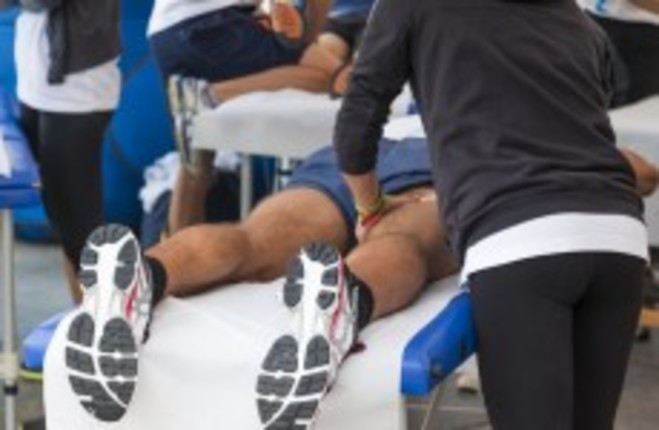GETTING REGULAR MASSAGE is one of the perks of being a top professional athlete but one not need to always seek out a qualified therapist to soothe aching muscles after a hard session.
Time and money are two of the biggest barriers to amateur athletes getting regular rub downs but with a few props at home – and no little motivation, you can do a pretty good DIY job.
“Self-massage after a hard session or after a long training ride are of huge benefit and there’s no reason you can’t work on all the major muscle groups (quads, glutes, hamstrings, calves and lower back) with your own hands, using foam rollers or any number of other props,” argues Cork-based massage therapist Colm Crowley.
Crowley has worked with a host of intercounty players as well as Olympic athletes and makes a pretty strong case for deep tissue work.
“Of course, self-massage can reduce the risk of soft-tissue injury, reduce recovery time after exercise or injury and help maintain flexibility and optimal range of motion.
“It can also assist the body in breaking down adhesions and scar tissue while it also helps reintroduce blood-flow, circulation, which brings cell nutrition and oxygen to those (damaged) muscle cells.”
Crowley, who counts World Champion 50k race-walker Rob Heffernan as one of his clients, explains a fairly simple self-massage routine for your lower body.
“The quads and calves are the easiest to massage and you can do it while sitting down on a chair or the floor.
“To do it, make brisk, light, up-and-down motions with your hands on the quad and around the knee.
“Do this for a few minutes until your muscles feel warm and after this, you’ll have noticed any tight or sore areas that may need extra attention.
“Next, with your thumb, apply pressure on the tight area for around 30 seconds and carry on with the light, brisk massage again and repeat this around the quads (where needed).
“Do the same with the calves while still sitting on a chair.
“Start with your left foot on the ground, resting your right ankle on the left knee with the right leg at 45 degrees. Start the massage, imagining yourself kneading bread.”
The glutes and lower back are a bit harder to massage but massage balls or foam rollers come in handy in this case.
In terms of aids, Crowley says foam rollers are great for the calves, hamstrings, guads, glutes and back.
“Spend 2 to 3 minutes on each muscle; you get the most benefit if you foam roll and then stretch the muscle.
“Another useful little tool is a stick roller. This is also extremely handy when you get the muscle more relaxed and it can be used pretty much anywhere to relieve tension in the muscle.
“Thirdly, tennis or hockey balls are also beneficial as they really isolate the muscles and are particularly good for the glute area and lower back.”
Colm Crowley is a massage therapist and qualified strength and conditioning coach at Fitnesswork gym in Cork.
